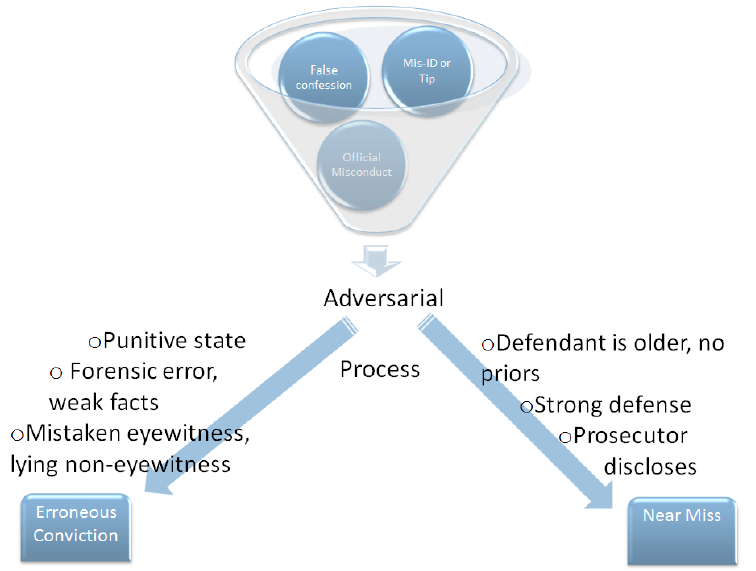Why are innocent people wrongfully convicted in certain cases yet acquitted in others? Could policy interventions prevent future erroneous convictions? NIJ-funded researchers at American University studied 460 violent felonies that occurred between 1980 and 2012 to find the answers.
The researchers did not study the factors that lead to the factually innocent people entering the criminal justice system in the first place. They focused instead on why some innocent people are convicted while others are released.
The researchers used a case comparison method — with a control group and logistic regression analysis — instead of the "case study" method researchers have used in the past. A group of 260 cases were identified from across the country where an innocent defendant was exonerated after conviction. These were matched with 200 "near miss" cases in which an innocent defendant was acquitted or the charges were dismissed before trial.
The researchers identified 10 factors that led to a wrongful conviction of an innocent defendant instead of a dismissal or acquittal:
- A younger defendant
- A criminal history
- A weak prosecution case
- Prosecution withheld evidence
- Lying by a non-eyewitness
- Unintentional witness misidentification
- Misinterpreting forensic evidence at trial
- A weak defense
- Defendant offered a family witness
- A "punitive" state culture [1]
In addition to quantitative analysis, the researchers used a qualitative analysis of the data. A panel of criminal justice experts analyzed 39 cases to determine how the ten factors were connected and whether "tunnel vision" played a role. Tunnel vision can occur when criminal justice professionals focus too much on building a case against a suspect while ignoring evidence pointing in a different direction.
Recommendations
The final report from the study offers recommendations to help prevent erroneous convictions in the future. These include recommendations on defense practice, exculpatory evidence, eyewitness identification, false confessions, forensic error, police misconduct, weak prosecution evidence, systemic failures and tunnel vision.
Read the final report, Predicting Erroneous Convictions: A Social Science Approach to Miscarriages of Justice (pdf, 433 pages).
Jump directly to selected segments of the final report:
- Abstract
- Executive Summary
- New Methods: Social Science Research on What Distinguishes Erroneous Convictions from Other Cases
- The Expert Panel's Qualitative Analysis
- Discussion of Implications
- Recommendations for Reform
- Study Limitations
About This Article
The research described in this article was funded by NIJ grant 2009-IJ-CX-411 , awarded to American University. This article is based on the grantee report “Predicting Erroneous Convictions: A Social Science Approach to Miscarriages of Justice” (pdf, 434 pages).


